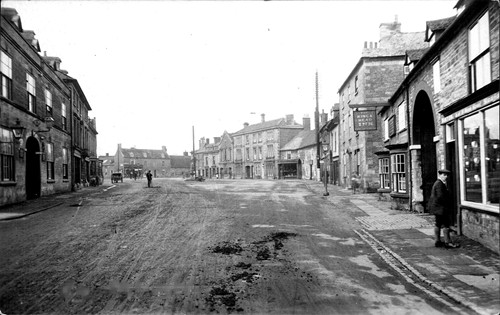|
Highways and byways

We tend to take our roads and
pavements for granted without realising that those we have today are
little more than a century old and that in past times using the highway
could be a hazardous undertaking.
Smooth, well-drained and durable hard surfaces are a modern innovation and
we only have to consult the novels of Charles Dickens for a glimpse of
what they were like in Victorian times when the roads were so dirty that
many lads such as the homeless boy Jo in Bleak House (1852), earned a
living as crossing sweepers, always ready with a broom to clear a path
over dirty, urban streets for passing ladies and gentlemen in return for a
coin or two.
Most of the roads that link our towns and villages follow the paths
trodden by animals and man from the earliest times but improved over the
centuries according to usage and technical progress and the modern
thoroughfares we have today have become a sign of a civilised society
which enable traffic and pedestrians move about with ease.
Although paved roads were known in the Middle East from the earliest
times, those we see today have their origins in the Highways Act of 1555
which transferred responsibility for their maintenance from central to
local government and today Lincolnshire County Council which is
responsible for maintaining highways through the Deepings now has an
annual spending budget in excess of £31 million (2015-16).
This progression has been slow and even a century ago roads through
populated areas such as Market Deeping were well below today’s standards,
often covered with a layer of mud, potholes, puddles, horse dung and other
forms of refuse while the High Street became flooded whenever the nearby
River Welland overflowed its banks during periods of heavy rain, the water
on some occasions rising to a depth of four feet.
The introduction of stagecoach travel brought an improvement and a boost
to local trade with such hostelries as the New Inn (now the Deeping Stage)
on the south side of the High Street and the Bull opposite providing
overnight accommodation for passengers and horses on the journey between
London and York.
A further impetus in road development came with the arrival of the motor
car in the early 20th century which could not cope with soft and uneven
surfaces and so the introduction of tarmacadam heralded a new era of
permanence without ruts or dust while improved drainage reduced the risk
of flooding.

Go to:
Main Index Villages
Index
|
